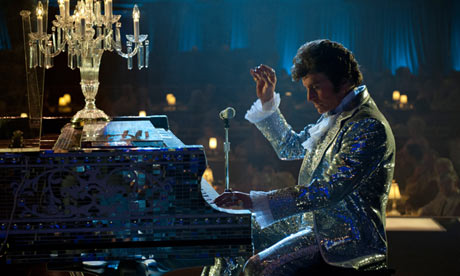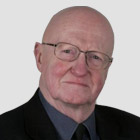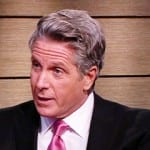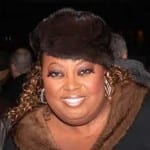Philip French: Behind the Candelabra
A brilliant performance by Michael Douglas illuminates an affectionate and funny portrait of the flamboyant entertainer
- By Philip French / The Observer (UK), Saturday 8 June 2013

Liberace was a fabulously rich, self-created midwesterner, the child of humble immigrant parents known for his extravagant lifestyle and vulgar tastes, as well as his worship of the American dream and the mystery in which he was wrapped. He was in effect a gay Jay Gatsby. His life was not, however, tragic, that is until his death of an Aids-related illness at 67, and he can be considered a success in that he achieved the acclaim and celebrity he had always dreamed of, and he died believing that he had taken the secret of his homosexuality to the grave.
- Behind the Candelabra
- Production year: 2013
- Country: USA
- Cert (UK): 15
- Runtime: 118 mins
- Directors: Steven Soderbergh
- Cast: Dan Aykroyd, Debbie Reynolds, Matt Damon, Michael Douglas, Rob Lowe, Scott Bakula
[pullquote] All the big Hollywood studios nixed the project, regarding it as too risky, “too gay,” until HBO embraced the production and made it into a modern, instant classic. The leads give stellar performances, and the rest of the cast is simply superb. The rave reviews are well deserved. [/pullquote]
Steven Soderbergh‘s cinebiography of Liberace, Behind the Candelabra, is (so he claims) his final movie, and it had to be made for America’s HBO network because no Hollywood studio would finance a film for the big screen that presented its subject’s private life with this degree of candour. This has resulted in the odd situation of the movie having its premiere in competition at the Cannes film festival followed by a theatrical release in Europe and its US premiere on television. It’s thus being reviewed in the States by TV critics and on this side of the Atlantic by film critics. Henceforth, it will appear in reference books in Europe, but not in the States, as the last addition to Soderbergh’s filmography.
The trademark candelabra on Liberace’s grand pianos were inspired by those in A Song to Remember, a popular, much-mocked 1940s movie starring Cornel Wilde as Chopin (with whom Liberace evidently identified as a fellow Polish pianist) and Merle Oberon as George Sand. At its centre, Behind the Candelabra is less a biopic than an intimate love story of the five-year relationship between two men, the world-famous star Lee Liberace and the unknown Scott Thorson. The film is based on Thorson’s published memoir, and inevitably assumes a position similar to that of the critical hero-worshipping Nick Carraway in The Great Gatsby.
Soderbergh and his screenwriter, Richard LaGravenese, take us behind the candelabra in three clever moves. The naive young Scott (Matt Damon, excellent in a difficult role), an animal wrangler for TV commercials with ambitions to be a vet, is picked up in an LA gay bar in 1977 by a handsome, worldly man, a little older than him. After they become lovers, Scott is taken to Las Vegas to see the 58-year-old Liberace (Michael Douglas) appear before an ecstatic audience of middle-class women. The vulnerable, orphanage-reared Thorson is as dazzled by the act as are the women. And so are we. For us, it’s the sheer brilliance of Douglas’s performance. As the outrageous star, he prances around the stage, flashing smiles, cracking familiar jokes, playing a boogie-woogie number at double speed. His white, rhinestone-covered coat-tails catching the light are like night-time Vegas seen from the sky. On the spectrum of gay deportment, shall we say, he’s closer to the camp director in Mel Brooks’s The Producers than to the grave doctor played by Peter Finch in John Schlesinger’s Sunday Bloody Sunday.
A backstage introduction leads to an invitation to Liberace’s house to view the man’s possessions. We’re now getting further behind the candelabra, but still they are there all around. “I call this ‘palatial kitsch’,” he tells Scott proudly, like Gatsby showing his mansion to Daisy. The smile takes on different forms – professional, warm, chilly, menacing – and his extravagant camp demeanour is modulated and moderated, but always there, blazing like a fake fire in a movie hearth.
He takes up the young man’s offer to treat his ailing dog, and very soon they’re in a bubbling hot tub, and then in bed, the entertainer’s sexual prowess explained in those pre-Viagra days by expensive implants. The ultimate intimacy, however, comes when Liberace reveals himself to Thorson without the enormous wig that conceals his baldness.
There’s real love and affection here, but it’s jealously possessive in the manner of that between the elderly movie star and the two-bit writer in Sunset Boulevard. Thorson becomes part of the great charade of Liberace’s life by becoming his chauffeur. It’s a piece of extravagant theatre in which the whole of America, from its president to its suburban housewives, have agreed to take part. It’s Wilde’s love that dare not speak its name translated into a conspiratorial cross between the mafia’s omerta and the US military’s “don’t ask, don’t tell”.
All the people around Liberace become grotesques, from the bewildered Thorson, who attempts to understand him, to his mother (an unrecognisable Debbie Reynolds with a prosthetic nose and a thick Polish accent) who doesn’t want to question her son too closely. But they make the obsequious lawyers and businessmen, who arrive in Savile Row suits to serve and exploit him, seem detestable.
Certainly, Soderbergh, LaGravenese and Douglas view Liberace with affection and admiration in their genital-warts-and-all portrait. In a tender and extremely touching movie he comes across as a colourful figure of some courage, as defiant in his way as Quentin Crisp, a gay contemporary of Liberace’s who confronted his homosexuality in a rather different manner and was also brilliantly impersonated by a straight actor, John Hurt, in The Naked Civil Servant.










